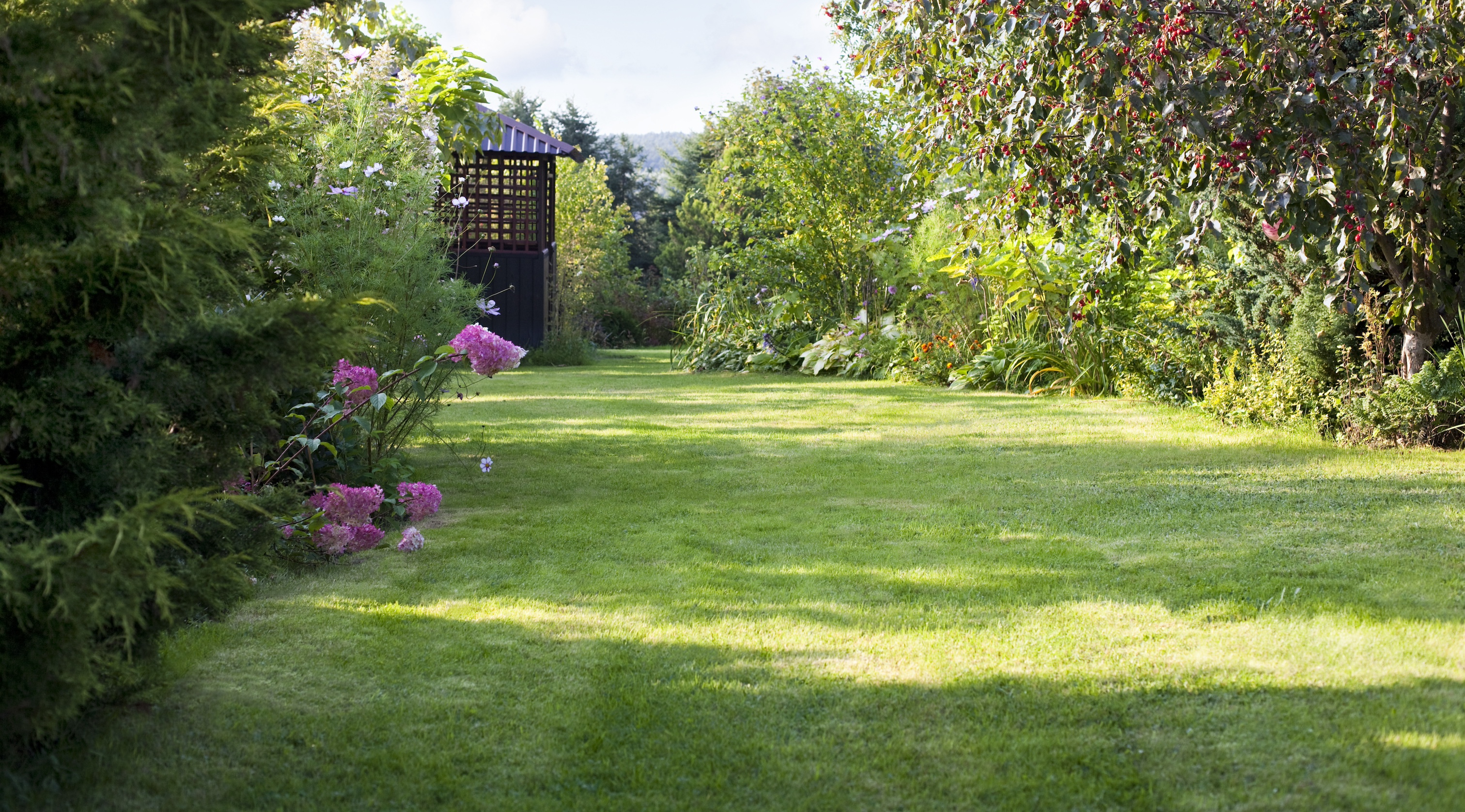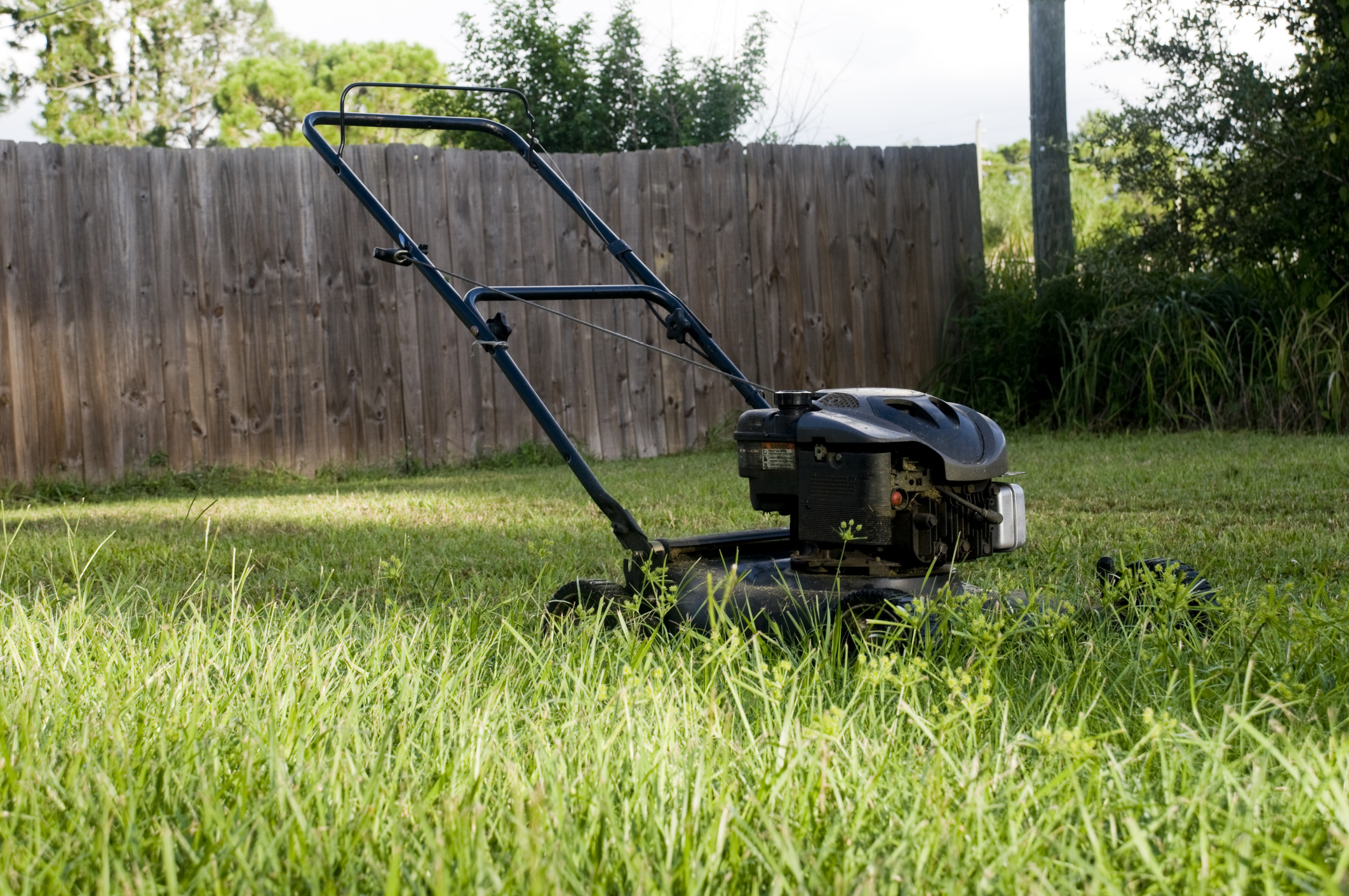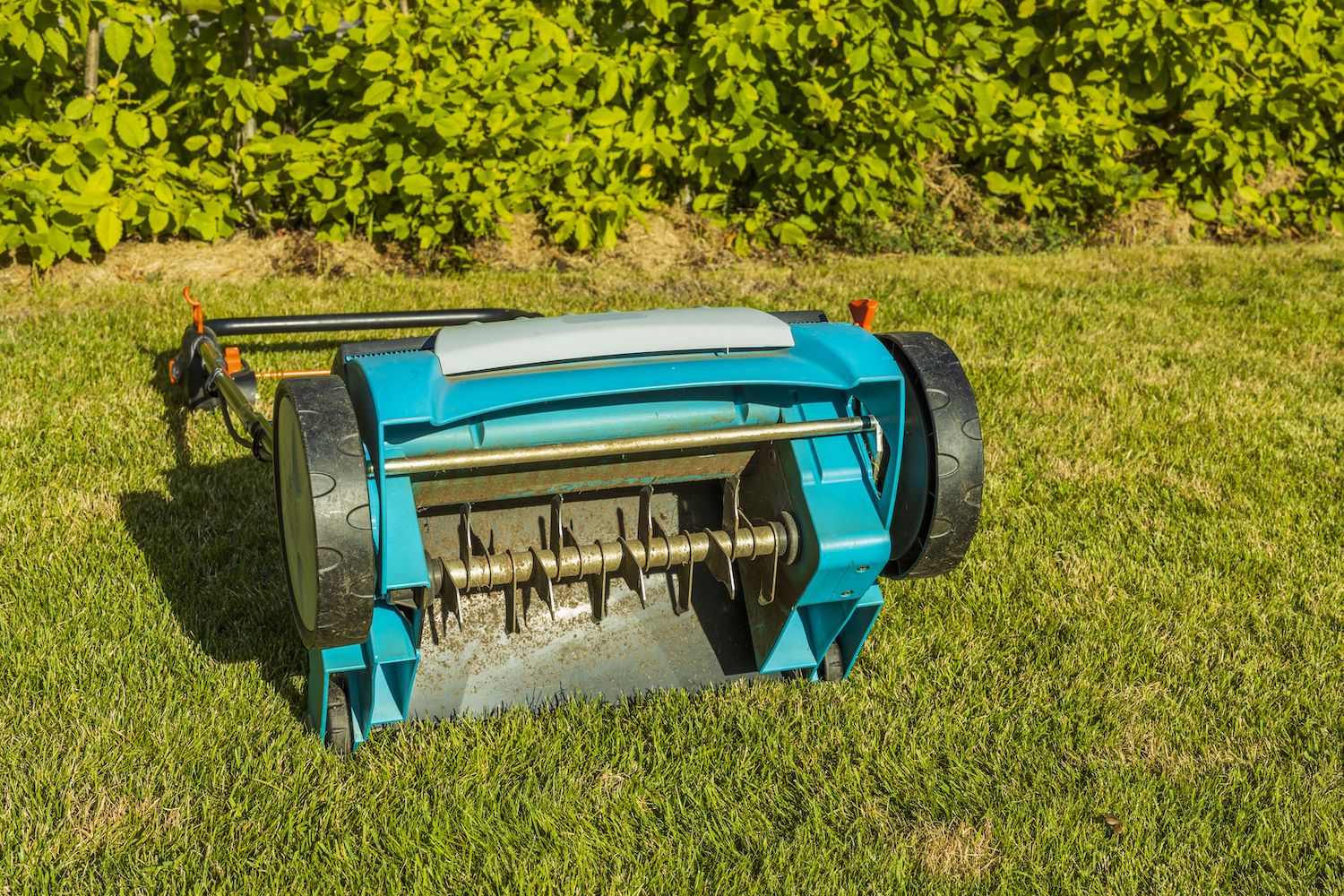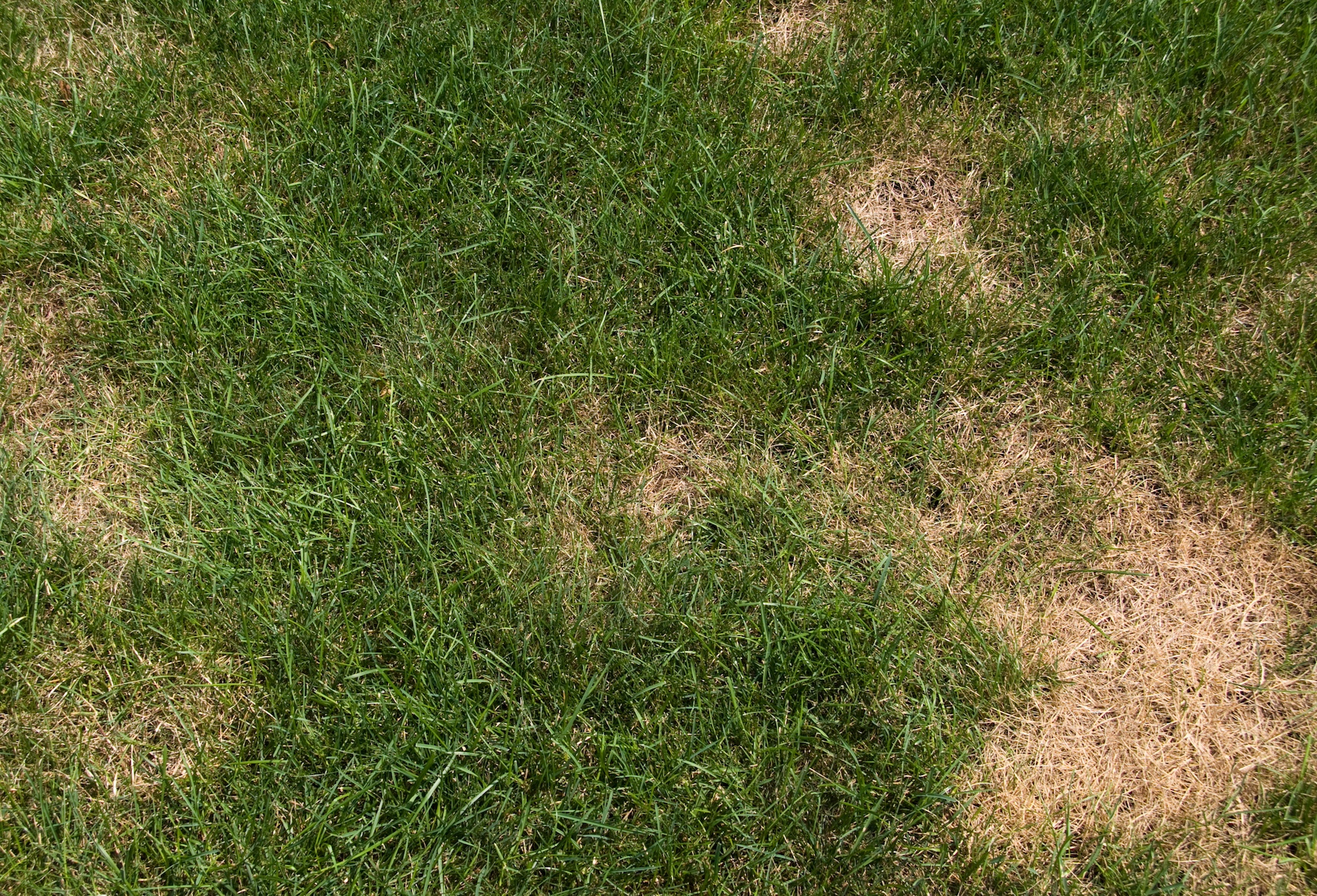
Scorching sun, paddling pools, summer parties and a lack of rainfall can take their toll on your yard's grass. To many, it's not a big deal. However, if you're a stickler for tidy turf, these lawn tasks for August will have it looking good again in no time.
Like most things in the garden, some patience may be required. So whether it's watering or reseeding bare patches, set aside some time to tackle your lawn care and you'll have luscious grass again.
That said, there may be little for you to do, if you've already switched to grass alternatives or allowed your lawn to go dormant. These options require less maintenance, and have lower environmental impact. So you may be able to sit back and let Mother Nature take care of things. Find out what type of lawn care gardening experts recommend this month.
1. Allow cool-season grass to go dormant
There's an assumption that if it hasn't rained for a while your lawn will need water and that may be the case. However, if you've had an extended period of hot weather, it's possible your lawn may have gone into dormancy. This is likely if it is made up of cool-season grasses and is looking brown. It's nothing to worry about and it will spring back to life when the cooler weather returns.
"The intense summer heat throughout much of the U.S. has left many lawns in distress," says John Steiner, Regional Manager of NaturaLawn of America. "It is normal for cool season lawns to turn brown at this time of year. But, do not let that fool you as there is a significant amount of activity going on below in the soil."
"Supplemental watering earlier in the summer season is good and will help to keep the lawn looking its best. However, drought-stressed lawns should only be watered about every 10-14 days. This will provide the water necessary for good plant health but will not stress the grass further by trying to bring it out of dormancy.
"The best watering to bring the lawn out of dormancy is rainfall. Summer rains are usually infrequent and come down fast. As we move into September, weather patterns will change, and that green lawn will reappear."
However, if you're considering whether you should water your lawn or not, be consistent. "Keep to your resolve regarding whether to let the grass go dormant or not,' says Kate Copsey, author, Month-by-Month Gardening New York & New Jersey. "Switching back and forth because the lawn is going brown is detrimental to the lawn in the long run. By September, the temperatures come down and you get more frequent rain, so the lawn will come out of dormancy by then anyway."
2. Water non-dormant grass
If you've already decided to keep watering your cool-season grass and not allow it to go dormant, continue your weekly watering schedule, (assuming there are no restrictions due to drought in your area). Warm-season grasses will be growing, so will require watering.
"Cool-season grasses generally require more water than warm-season grasses, typically around 1.5 inches per week," says John Steiner. "During the summer, Kentucky bluegrass might need up to 2.5 inches per week to stay green and healthy. Warm-season grasses require around one inch of water per week.
"This can be either from rainfall or from irrigation. If you've had no rain, water deeply but infrequently early in the morning to allow your grass to absorb moisture before the heat of the day. This strategy helps your lawn stay hydrated and resilient."
3. Only mow if your grass is growing

Grass only needs to be cut when it is actively growing. As already stated, some lawns may have gone into dormancy due to the summer heat. So check your lawn first, before bringing your mower out.
"Earlier in the year, when lawns were growing, many homeowners and lawn mowing services were cutting at least once per week," says John Steiner. "However, in August, if the lawn has gone dormant, or is under stress, this practice of mowing can be harmful to the grass."
"In August, mow only if the lawn is actively growing. Do not follow the calendar. You may even find that areas of the lawn growing in a shade garden will need to be mowed and areas in the sun do not. If this is the case, always be sure to cut with a sharp blade and never remove more than one-third of the grass blade."
4. Aerate your lawn

Aerating a lawn is a key part of turf care and is best done when grass is growing. For cool-season grasses this is in the fall or spring, while for warm-season grasses it's during spring and summer. Aeration only needs to be done once or twice a year.
"Aeration and seeding are important investments for the health of your lawn," says John. "They will help it recover from the heat, by reducing soil compaction, increasing oxygen and water uptake, increasing root development, and reducing thatch."
Price: $20.99
A simple an effective tool for aerating your lawn by hand.
Price: $12.99
Try these fun-to-use aerating shoes to aerate as you move about your yard.
Price: $169.99
This towing aerator is an efficient way to do the job, that'll help you work smarter in your yard.
5. Repair bare patches

If your lawn has remained green, but you have bare patches of brown grass from paddling pools, large outdoor toys, pet's mess or anything else, they can be repaired, or prepared for repair, now.
"The end of August is a good time to start lawn repair and renovation in New York and New Jersey," says Kate Copsey. "Plant seed on well-prepared soil and cover with a layer of compost or straw."
"Areas for major lawn reseeding or planting sod need to be cleared of weeds and stones and any chemicals, such as lime, should be incorporated into the soil before grass seed is sown."
"In northern and mountainous areas, as the weather cools toward the middle and end of August, you can start repairing bare spots in the lawn or renovating an existing lawn,' says Charlie Nardozzi, author of Month-by-Month Gardening, New England. "In southern and coastal areas, wait until September and October to seed and repair your lawn."
6. Do a soil test before fertilizing
Once the weather cools and the rain returns, any grass that has been dormant and has turned brown will return to green, and may require mowing. The grass clippings produced provide mulch and will fertilize the soil. However, some people still like to apply organic fertilizers.
"The only lawns that need fertilizer this month are those in cooler areas where frosts occur in the middle or at the end of September, such as Zone 4," says Kate Copsey. "For those of us in Zones 5, 6, or 7, we have October frosts, so the fall fertilizer should not be applied until September. If you didn’t get a soil test earlier, early August is a good time to do that." Try this soil test kit that's only $16 from Amazon.
"The application of essential nutrients will help the lawn recover as temperatures cool down and rainfall becomes more abundant," says John Steiner.
7. Limit foot traffic
If your grass is brown and dormant due to drought-conditions, walking and running on it can stress it further. However, weigh up your priorities. If letting your kids or pets play in your yard is more important than a manicured lawn, the grass will recover when the rainfall returns.
"Throughout the summer, lawns will continue to come under stress from high temperatures and lack of adequate moisture, leading to drought stress," says Phil Catron, founder of NaturaLawn of America. "During drought conditions, if you can minimize foot traffic on the lawn, it will reduce stress on the grass."







